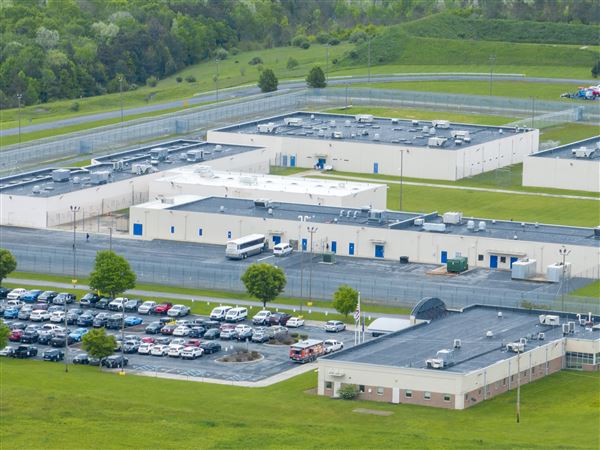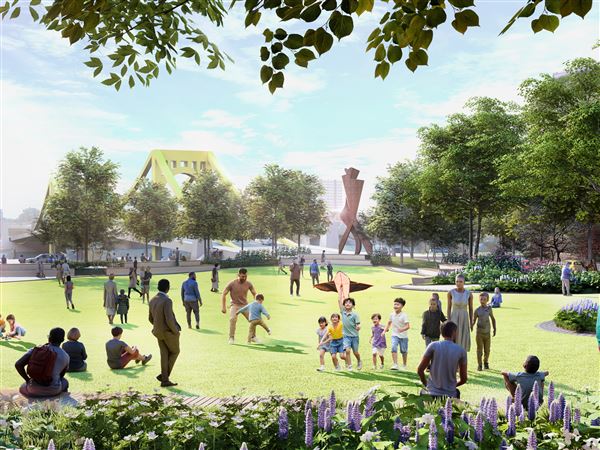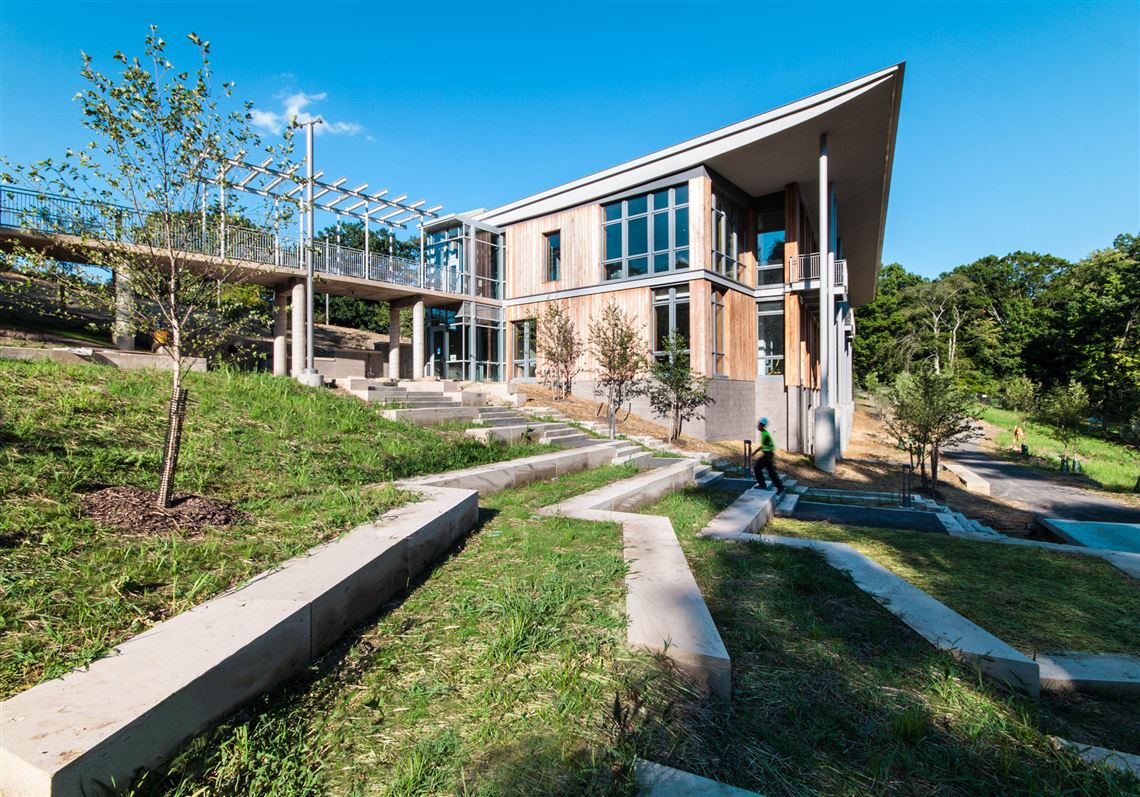The “Let’s Talk About Parks” series is designed to encourage exploration and discovery of Pittsburgh’s urban parks.
Breathing is a natural necessary act for most living things. The intake of air into lungs and the expulsion of it is evident in endless variations in our city parks, from the squirrels racing across a budding dogwood tree limb in Riverview Park, to the red-tailed hawk swooshing overhead in Schenley Plaza. Spring peepers are prodigiously good breathers, as the balloon-like vocal sac in their throat and their high-pitched trill dramatically illustrate. Trees — often called the earth’s lungs — also breathe in their own way, soaking in carbon dioxide through their leaves and emitting life-giving oxygen. Likewise, plants such as grass, witch hazel and the emerald shoots of perennials sprouting at the Highland Park Entry Garden take in air and release oxygen, helping clean our air so we can breathe freely.
Some buildings have systems in place to allow air to be taken in, filtered and expelled. Plains Native Americans constructed tipis — or teepees — that enabled air intake and expulsion. These conical shaped structures had air intake doorways and an upper adjustable collar opening on the windward side to allow smoke from internal cooking and heating to escape. Farmers throughout the world long ago perfected the art of air ventilation and transfer in their barns. Many barns have siding that has tiny open spaces between planks so fresh air can enter. This design allows deeply stacked crops such as hay and straw to release heat so fire, condensation and chemical imbalances are avoided. In Pittsburgh’s Frick Park, you can experience one of the world’s most technologically advanced buildings as it breathes.
The Frick Environmental Center is designed to meet the Living Building Challenge, which requires certified structures be net-zero energy waste, and water. Constructed to be as chemical-free as possible, collect all energy and nonpotable water it uses and to embrace elements in seven different categories, The Frick Environmental Center is designed to be symbiotic with those who use the building and its surrounding environment. The seven categories — called petals — include energy, site, materials, beauty, health, equity and water and are carefully considered in every decision made throughout the building’s design, construction and usage.
“The Frick Environmental Center is designed to be a living, breathing part of Frick Park,” said Camilla Rivera-Tinsley, Pittsburgh Parks Conservancy education director. “Water collected on site is used for nonpotable use in the building, heat and cooling is accomplished by a circulation system that extends deep into the surrounding ground, and on-site composting connects the Center to nature. This building itself is an amazing tool for environmental learning.”
Indeed, the Frick Environmental Center does breathe through a passive ventilation system that uses natural outside air movement and pressure differences to both passively cool and ventilate the building. When you visit the center, take a careful look at the window positioning of outward facing and internal room windows. Small windows placed toward the top of the center’s classrooms help circulate air drawn in through lower-placed windows on the other side of the room. Keep your eye peeled for small red and green lights near some internal doors. They are part the building’s efficiency monitoring system that lets Parks Conservancy staff know when to open or close windows to keep air circulation at levels best for energy conservation and comfort.
The Frick Environmental Center is aiming to be one of only a handful of Living Building Challenge-certified structures in the world, and part of that process is one year of recorded net-zero energy usage. Starting April 22 — Earth Day — Parks Conservancy specialists will start the clock on monitoring energy usage for the center’s Living Building Challenge certification. “The process of preparing for our 12-month performance period has been a great opportunity to better understand the building’s systems and how energy and water efficiency are impacted by natural conditions, occupant’s behaviors and facility usage,” said Parks Conservancy sustainability coordinator Maureen Olinzock. “The thoughtfulness that goes into everything we do makes being in the building an exciting and special experience.”
The next time you are running, playing, biking or just walking outdoors, listen to your own breath and take a moment to consider how other things breathe. Animals you see in our city parks all breathe, whether they are fish, worms, red-winged blackbirds, raccoons or Homo sapiens. Likewise, many types of buildings throughout history have ventilation systems that enable them to circulate and purify air in a way that is similar to breathing. In the Frick Environmental Center, you can experience all of these first hand — a wonderful endless array of diverse wildlife, foliage and humans, and one of the greenest, most alive buildings in the world.
For information on Pittsburgh Parks Conservancy Earth Day at the Frick Environmental Center, visit www.pittsburghparks.org/earth-day.
First Published: April 4, 2017, 4:00 a.m.















